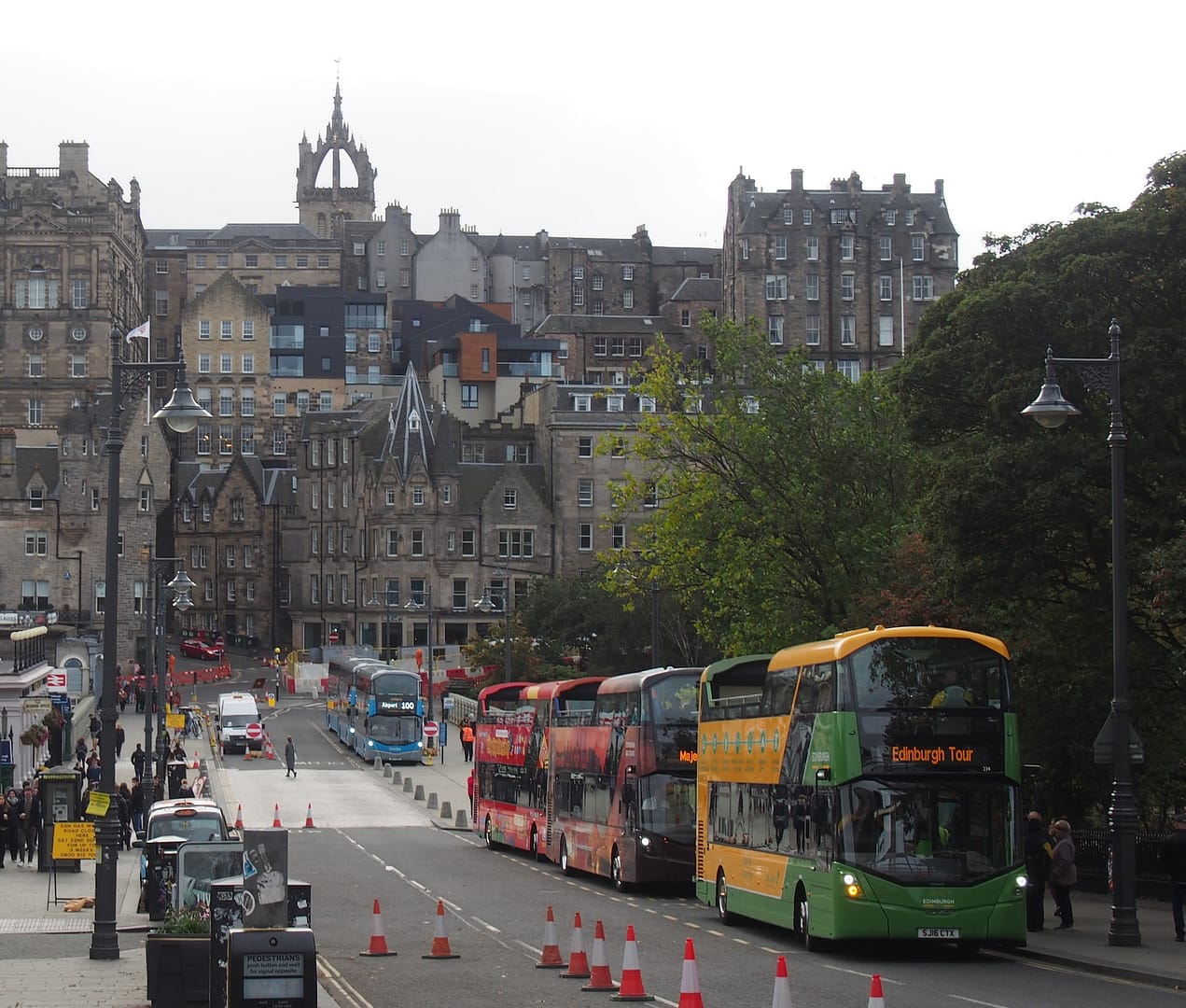In Scotland, just like in many other parts of the world, pedestrians play a crucial role in the transportation ecosystem. Whether you’re strolling through the charming streets of Edinburgh or crossing busy intersections in Glasgow, it’s essential to know your legal rights as a pedestrian to ensure your safety and well-being. In this article, we will delve into the legal rights of pedestrians in Scotland, exploring the rules and regulations that govern their interactions with vehicles on the road. We will also explore the steps you should take when making a personal injury claim.
The Right of Way for Pedestrians in Scotland
One of the most common questions people have is whether pedestrians have the right of way in Scotland. The answer to this question is not as straightforward as it may seem. In general, pedestrians do not have an absolute right of way over vehicles on the road. Instead, the law in Scotland emphasises shared responsibility and cooperation between pedestrians and drivers.
Shared Responsibility on the Road
In Scotland, pedestrians are expected to exercise caution and use designated crossings when available. However, drivers also have a legal obligation to be mindful of pedestrians and to yield the right of way when necessary. This means that while pedestrians do not have an automatic right of way, drivers must give way to pedestrians in various circumstances.
Zebra Crossings
One of the most recognisable pedestrian crossings in Scotland is the zebra crossing. Zebra crossings are marked by black and white stripes on the road and zigzag lines on either side. When a pedestrian steps onto a zebra crossing, vehicles are legally required to stop and allow the pedestrian to cross. It’s important for pedestrians to make their intention to cross clear by extending their arm out, signalling their intent to cross.
Pelican and Puffin Crossings
Pelican and puffin crossings are equipped with traffic lights and pedestrian buttons. These crossings provide pedestrians with a safe way to cross busy roads. When the green pedestrian signal is lit, pedestrians have the right of way, and vehicles must come to a stop. It’s crucial for pedestrians to obey the traffic signals at these crossings to ensure their safety.
Unmarked Crossings
In some areas, there may not be marked crossings or traffic lights. In such cases, pedestrians are still expected to exercise caution and wait for a safe gap in traffic before crossing the road. It’s essential to make eye contact with drivers if possible and ensure they have seen you before stepping onto the road.
Rules for Pedestrians in Scotland
While pedestrians do not have an absolute right of way, they are subject to specific rules and regulations to ensure their safety and the smooth flow of traffic. Let’s take a closer look at some of these rules:
Use of Crossings
Pedestrians are encouraged to use designated crossings whenever possible. These crossings are designed to provide a safe path across the road. Failing to use a nearby crossing when available can be considered jaywalking and may lead to legal consequences.
Obey Traffic Signals
When approaching pedestrian crossings with traffic lights, it’s essential to obey the signals. Wait for the green signal to indicate that it’s safe to cross, and be sure to do so promptly. Crossing against a red signal can put your safety at risk and may also result in legal penalties.
Avoid Distractions
Just as drivers are expected to avoid distractions while behind the wheel, pedestrians should also stay attentive and avoid distractions when crossing the road. This means putting away smartphones, removing headphones, and paying full attention to your surroundings.
Keep to the Left
In Scotland, pedestrians should walk on the left-hand side of the road. This practice allows pedestrians to face oncoming traffic, making it easier to react to potential hazards and ensuring better visibility for both pedestrians and drivers.
Alcohol and Drugs
It’s worth noting that being under the influence of alcohol or drugs while walking on the road can impair judgement and reaction times, increasing the risk of accidents. It’s always advisable to avoid walking on the road while intoxicated.
Making a Personal Injury Claim with National Claims
At National Claims, we understand that accidents can happen, even when pedestrians follow the rules and exercise caution. If you find yourself involved in a pedestrian accident in Scotland due to the negligence of a driver, you may have the right to make a personal injury claim.
Understanding Personal Injury Claims
A personal injury claim is a legal process that allows injured individuals to seek compensation for their injuries, medical expenses, pain and suffering, and other losses resulting from an accident. In the context of pedestrian accidents, it typically involves holding the at-fault driver accountable for their actions.
How National Claims Can Help
At National Claims, we specialise in personal injury claims and have a panel of experienced solicitors who can guide you through the claims process. Here’s how we can assist you in making a personal injury claim as a pedestrian in Scotland:
Initial Consultation
Our process begins with an initial consultation, where we will discuss the details of your accident and assess the viability of your claim. We will also explain your legal rights and options.
Gathering Evidence
To build a strong case, we will work to gather evidence, which may include witness statements, accident reports, medical records, and any other relevant documentation. This evidence will be crucial in establishing the driver’s negligence.
No Win, No Fee
At National Claims, we operate on a “no win, no fee” basis, which means you won’t incur any legal fees unless we successfully secure compensation for you. This ensures that you can pursue your claim without financial risk.

Conclusion
In Scotland, pedestrians do not have an absolute right of way, but they do have legal protections and responsibilities. The key to safe pedestrian travel in Scotland is a shared responsibility between pedestrians and drivers. While drivers must yield the right of way in specific situations, pedestrians are also expected to follow rules and exercise caution.
Remember, using designated crossings, obeying traffic signals, avoiding distractions, walking on the left side of the road, and staying sober while walking are essential for your safety and the safety of others on the road. By understanding and respecting these rules, pedestrians can enjoy safer journeys through the beautiful landscapes and bustling cities of Scotland.
So, whether you find yourself exploring the historic streets of Edinburgh, admiring the natural beauty of the Scottish Highlands, or simply going about your daily routine, knowing your legal rights and responsibilities as a pedestrian will help you navigate Scotland’s roads with confidence and safety in mind.
If, unfortunately, you are involved in a pedestrian accident due to someone else’s negligence, National Claims is here to assist you in making a personal injury claim. Our experienced panel of solicitors will work tirelessly to ensure that you receive the compensation you deserve, allowing you to focus on your recovery and move forward with your life. Your safety and well-being are our top priorities, and we are here to support you every step of the way.
Contact us today and start your claim with the help of one of our claims specialists.
Click below to see why we are one of the most trusted claims management companies in the UK.

We’re proud of our excellent customer reviews
We thrive on delivering exceptional service and ensuring our clients’ satisfaction. Don’t just take our word for it. Check out some of our independent reviews to see what our clients have to say.
Excellent

This firm is excellent, they sorted out my car pay out and injury claim very fast, they always communicate with you all the time.

My accident case was dealt with confidence and with great result of the outcome, especially James kept me informed all the time.

I was very impressed at the way my inquiry was treated. I was listened to attentively and everything I needed to know was explained to me.






